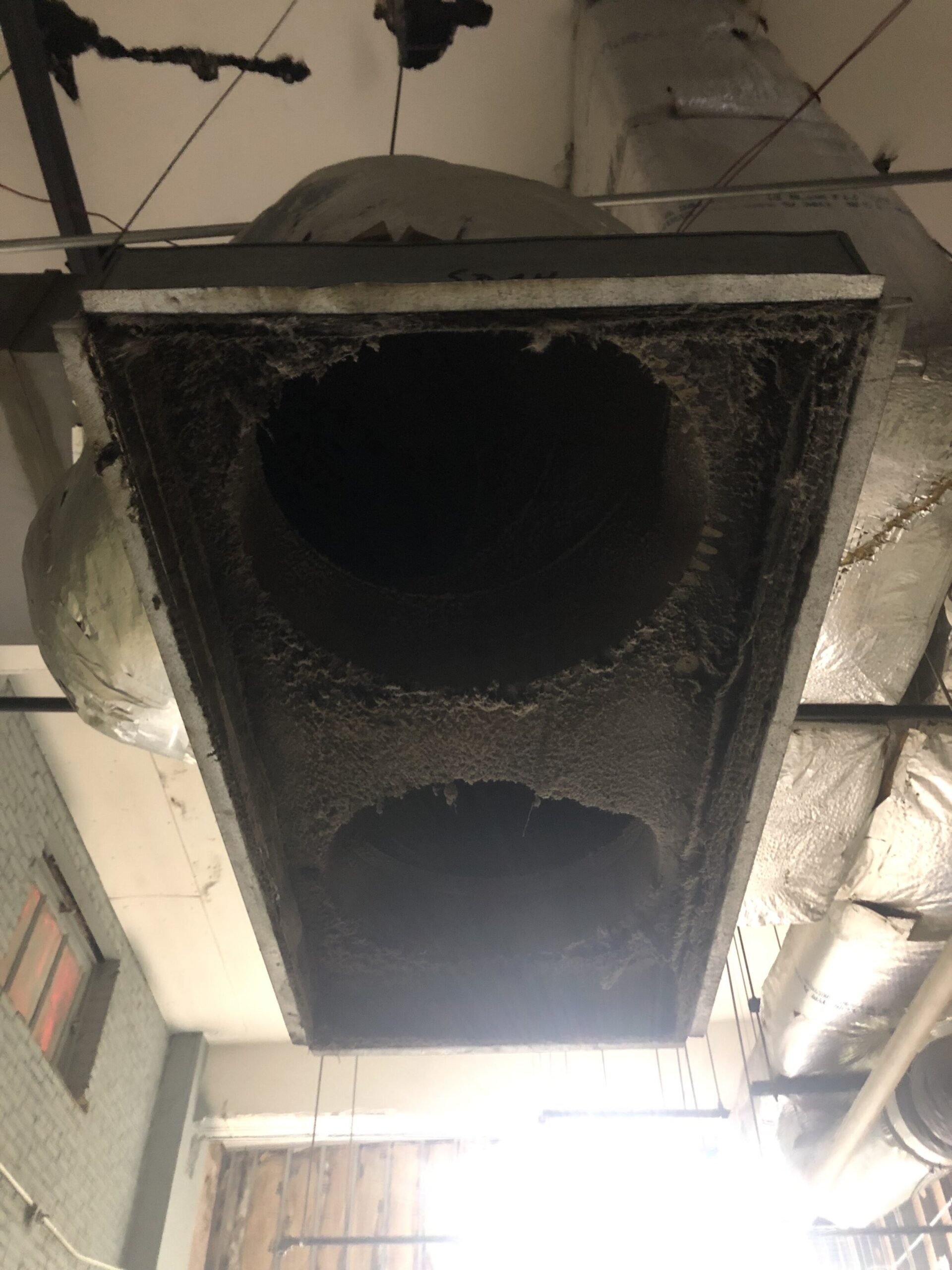Commercial Kitchen HVAC: A More Excellent Way
Commercial HVAC design is one part of the broad world of Mechanical Electrical and Plumbing (MEP) design, and buildings with commercial kitchens make up a small percentage of all the types commercial design projects possible. Traditionally, the HVAC design strategy in buildings with commercial kitchens has been to design two separate systems:
- the commercial kitchen ventilation (CKV) system, to remove heat and effluents from the cooking process from the building.
- the building HVAC system, to maintain relatively comfortable space conditions for people.
The success of this approach is highly dependent on the design of the CKV system, as it is responsible for the removal and replacement of air volumes that can easily be an order of magnitude higher than the rest of the building’s HVAC system.
As CKV accounts for such a small percentage of commercial buildings, most designers rely heavily on the expertise of equipment providers for their kitchen hood system design. But there are many hood providers in the market, and the quality of their designs varies widely. Kitchen ventilation systems are complex, with many interconnected parts, and a simple change to any one part often has a dramatic impact on the ability of the system to perform. Hood performance is evaluated in the ability to capture and contain the heat and effluents produced in the cooking process, something that is tested during the final inspection with a smoke test. The default means of getting a poorly functioning hood system to pass a smoke test is to increase the exhaust rate.
Because the building HVAC system has been designed separately under the assumption that the hood design will perform well, when adjustments are made to get the hood to pass inspection, it inevitably throws off performance of the building HVAC system as well. The result is an uncomfortable space, increased energy consumption, and reduced equipment lifespans.
The Standard Approach
In Figure 1 we see a cross section of a commercial kitchen, with an exhaust hood, fan, and makeup air unit on the left hand side and a rooftop unit on the right. The airflow paths illustrated in Figure 1 represent the desired performance of a typical system design.
- The kitchen hood is exhausting a given volume of air as determined by the equipment manufacturer.
- Approximately 80% of the exhaust volume is being replaced through a heat-only makeup air unit (MAU) through supply plenums along the front of the hood. This replacement air is all captured by the hood, and therefore does not impact the building HVAC design.
- The remaining 20% of the exhaust volume is supplied through the building rooftop unit (RTU) as outside air, which also meets the space fresh air requirements.
In reality, however, the system will not always perform as desired, particularly during hot or humid seasons. Figure 2 illustrates why.
- Since the MAU does not have cooling, the hot and humid air being delivered through the supply plenum is very light and buoyant, and much of it diffuses into the space rather than being captured by the hood.
- Supposing 30% of the makeup air diffuses into space, now only 56% of what the hood is exhausting is dedicated makeup air, while the amount of conditioned space air that is exhausted more than doubles, from 20% to 44%.
- The RTU responsible for conditioning the space is now expected to handle much higher loads than it was designed for, and therefore cannot keep up. This results in higher room temperatures and humidity levels, which makes the space uncomfortable and even dangerous. Elevated humidity levels allow the growth of mold and are often the cause of slippery floors, in addition to dripping ductwork, condensation on coolers, kitchen smells permeating clothing, and other issues that people do not commonly associate with the HVAC system.
- Because the RTU is operating outside of design conditions, it will also consume more energy and wear out faster than expected, leading to increased costs for the end user.

There are additional hidden costs in this design that are not often considered. For instance, because the kitchen RTU is recirculating most of the air it processes, the return grills that pull air back into the unit become functional exhaust outlets that compete with the kitchen hood. In order to make sure enough air is pulled into the hood to maintain capture and containment, the hood must operate at higher exhaust rates than would be necessary if there was no competing exhaust outlet in the space. Increased exhaust rates are directly correlated with increased energy consumption, and higher costs for end users.
Experienced designers who have dealt with kitchen HVAC projects will often add additional cooling capacity in the kitchen RTU in order to handle the additional loads from the kitchen hood system. The increased cooling capacity, however, also requires more air movement, which can disrupt the hood system’s ability to capture and contain. As previously mentioned, the most common field solution is to increase the hood exhaust rate.
The end result of having separate, competing systems in the same space is a downward spiral of performance that drives an upward spiral of cost. This is the accepted norm in buildings with CKV systems, as illustrated by the phrase coined by Harry Truman in the 1940’s, “If you can’t take the heat, get out of the kitchen.”
But now I will show you a more excellent way.
Instead of separate designers designing separate systems for the same space, what if a single designer could create a unified design for the space, such that the kitchen ventilation and the space conditioning worked together? Instead of comfort and costs spiraling out of control, what if a unified design could provide consistent comfort year round, while reducing operating and maintenance costs at the same time? What would such a design look like?
Beginning with the kitchen hood, proper exhaust rates are selected taking advantage of appropriate hood features such as overhang, side enclosures, and filter heights to ensure capture and containment during cooking operations. Note that these exhaust rates will be lower than in traditional designs, because there will be no competing exhaust outlet for an HVAC return, as discussed below.
The hood will not feature any supply plenums, as there will be no dedicated makeup air unit. Instead, the MAU and RTU will be combined into a Dedicated Outdoor Air System (DOAS) unit, which will deliver fully conditioned and dehumidified makeup air while also heating and cooling the space. This reduces ductwork and installation complexity, resulting in reduced installation costs.
This design approach is illustrated in Figure 3. All of the air supplied by the DOAS unit is fully conditioned and dehumidified as it enters the space, where it will mix with warm air from internal loads providing comfortable conditions as it passes through the space before being captured by the hood and exhausted from the building.
It’s easy to see how this approach will dramatically improve space comfort and conditions, because all the air that comes into the building is conditioned before entering the space. What’s amazing is that this approach can also reduce operating costs, provided it is properly designed with the right kind of equipment. There are several reasons why:
- Reduced hood exhaust rates allowed by controlling the airflow delivery methods substantially reduces energy costs.
- Selecting a DOAS unit with advanced, fully modulating controls allows the unit to match capacity to the varying loads throughout each day, week and year. This means that the unit is only ever using as much energy as necessary to meet the conditioning needs at that moment, in contrast to cycling or even multi-staged units.
- Cooling unit compressors have lifespans measured in number of starts, and a unit with a modulating compressor will have far fewer starts than a cycling unit, substantially prolonging the life of the equipment. Most cycling units come with a 1 year warranty, and are expected to last 10-15 years. By contrast, one DOAS manufacturer offers up to 10 years of warranty, with the unit expected to last 25 years.
In addition to these measurable savings, there are a number of intangibles that come into play as well. With increased comfort and elimination of health and safety issues related to poor HVAC design, a business can expect improvement in employee satisfaction and productivity, reduction in employee turnover, and increased customer retention, all of which substantially impact any business’ bottom line.
Finally, with increased public attention on airborne communicable diseases like Covid-19, it’s worth noting that reducing the amount of air recirculated in a space while increasing the amount of fresh outside air introduced to a building has been estimated to reduce airborne illnesses by up to 76%.
There’s never been a better time for a unified HVAC design for buildings with commercial kitchen ventilation needs. With Professional Engineering licenses in 49 states, Blue Energy Design has the experience and expertise to provide a unified design, tailor fit for your application. Contact us now for assistance!
